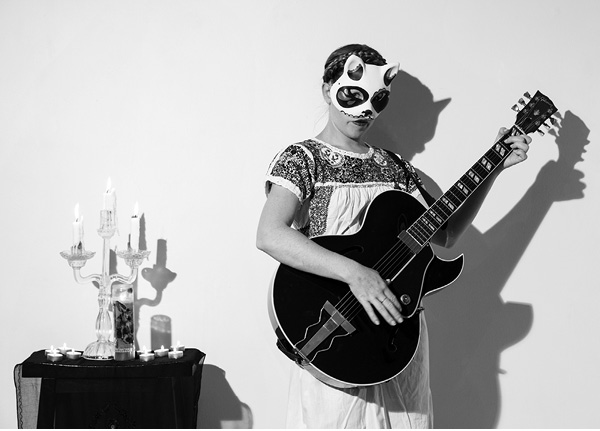
DAY OF THE DEAD
first performed on January 10, 2013
1982 Bar, Gainesville, FL
performed nine times in 2013
LINDSEY MILLS
Brooklyn, NY
055854115l055854115i055854115n055854115d055854115s055854115e055854115y055854115m055854115i055854115l055854115l055854115s055854115@055854115g055854115m055854115a055854115i055854115l055854115.055854115c055854115o055854115m
lindseymills.bandcamp.com
DAY OF THE DEAD
LINDSEY MILLS
“Day of the Dead” is a creative expression of grief, the writing and the performance working in tandem to embody the constant fluidity of birth and death, joy and sadness, sleep and waking. The lyrics revolve around a dream that came to me on November 1, a day celebrated in Mexico as an occasion to commune with the dead. In this dream, my recently deceased feline companion and I were for a timeless moment reunited, dancing around a fire and understanding one another without the need for words. I conceive of each performance of the song as a ritual means of visiting the borderland where I believe this dance took place.
Both the writing process and the presentation of a text to an audience are visceral creative acts. I write lyrics in close association with the rhythm of my instrument. Then, when performing in the dynamic presence of an audience, I am able to use this rhythmic component to forge a bodily connection with listeners—to invoke the heartbeat. In this song, the predominant rhythm hearkens to bossa nova and the breakdown to mariachi. Lyrically, I use a common song structure (verse/chorus/verse/chorus/bridge/chorus) to provide a basis of familiarity, then unfold scene-setting imagery, often overlapping elements of the natural and the supernatural.
However widely an audience’s interpretation of the lyrical content may range, at least the instrumental portion can be universally understood. In this way, the song exists as an intermedia text. It is a ghostly child, suspended between the physical and spiritual planes of existence where, moment by moment, a body remains in flux. “Day of the Dead” is intended to demolish the boundary often constructed between these planes. This and other such boundaries—placed arbitrarily between such things as the body and mind, femininity and masculinity, nature and culture and humans and nonhuman animals—are rhetorically re-imagined with an inclusive middle ground in their place.